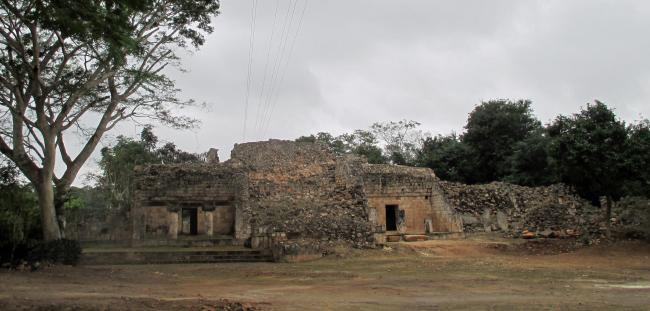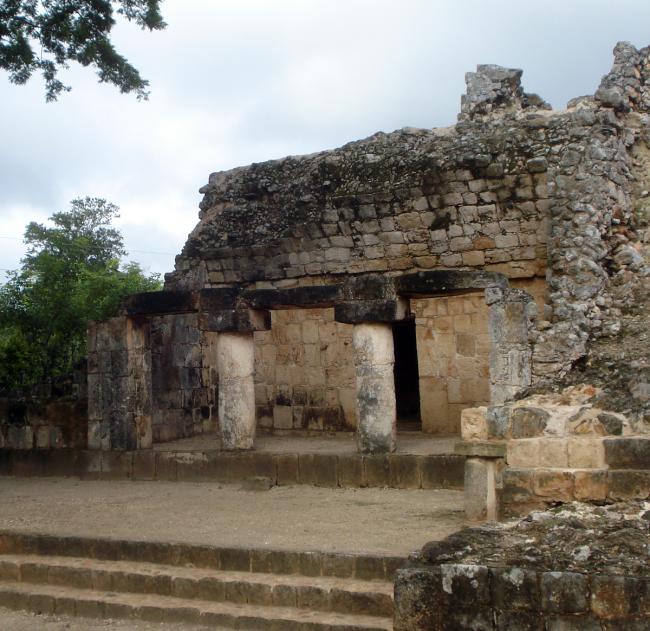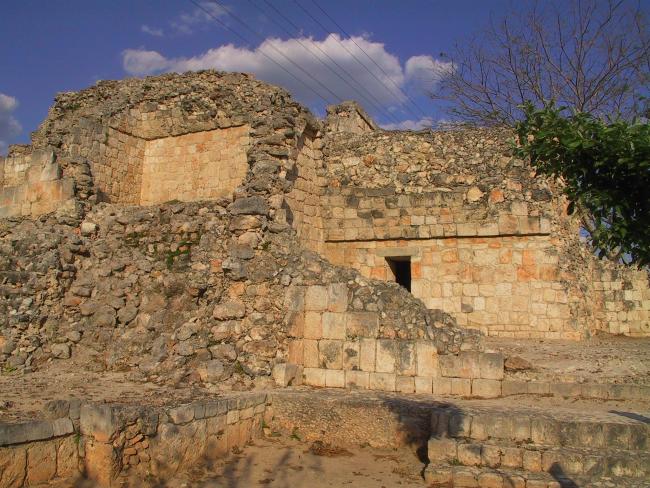
Grupo Central
Estructura
The archaeological remains are distributed on both sides of the road; some of them preserve walls and parts of vaulted arches still standing; others have collapsed and are only visible as mounds. The architectural group open to the public has been called the Central Group and only two buildings that bordered a courtyard have been recorded in detail.
Building of the Jambs or Structure 1: The building of the Painted Jambs or Structure 1 is located on the west side and has only been partially explored, registering four rooms on its south end and two rooms on the north side. Its central sector is a solid core that served as a base for other corridors located in the upper part. The staircase on the east side has a vaulted corridor that runs from north to south. Building 1 was a palatial two-story construction. On its west side there was another staircase leading to two rooms erected above. The overall dimensions of Building 1 are 40 m long by 20 m wide. It may have reached an average height of 8 m. An interesting detail is the combination of simple entrances with tripartite entrances formed by monolithic columns.
Structure 2: Formed by a quadrangular platform, nine meters long, with stairways to the east and west. It has three masks in the south side; one in the center and one in each corner. The corner motifs extend to the north and end at the narrow stairways. Unfortunately, the representations were looted and partially destroyed in their middle and upper sectors. The elements that conform the central mask are similar to those of the corners and their characteristics indicate that they are representations of the Aquatic Serpent.
To the north of the platform we find a chamber with a single entrance from the north. It is reached through a corridor that shares with another room with access from the south. It is noteworthy that both rooms and the corridor they share were roofed with a false arch finished in point, that is to say, without keystones or lids. The east and west sides of the first room again have anthropomorphic masks in the corners. From them emerge vegetal guides topped with flowers, some containing human faces.




